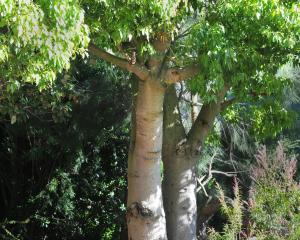The tiny leaves of this willow are shiny and green with a dull underside. Curiously, as they change to red and yellow they emit a honey-like scent.
The plant spends the winter as a tangled mass of lifeless-looking stems, which on closer inspection carry next season's tiny purple buds.
These break into leaf in early spring, when the plant is also covered in catkins poking up through the foliage like minute purple candles.
When mature, the catkins produce typical fluffy salix seed heads which smother the plant in white fuzz before being dispersed by the wind.
Salix hylematica is native to the Himalayas, growing at 3000m-4000m in moist rock crevices.
It grows well in full sun, with moist but free-draining soil.
Adding peat to the soil before planting can be beneficial.
It looks fantastic planted where it can tumble down over a rock, as can be seen on the edge of the lower path of the Rock Garden, and is a superb plant to use on the edge of a tub with other alpine treasures.
• Robyn Abernethy is the rock, water and alpine collection curator at Dunedin Botanic Garden.











